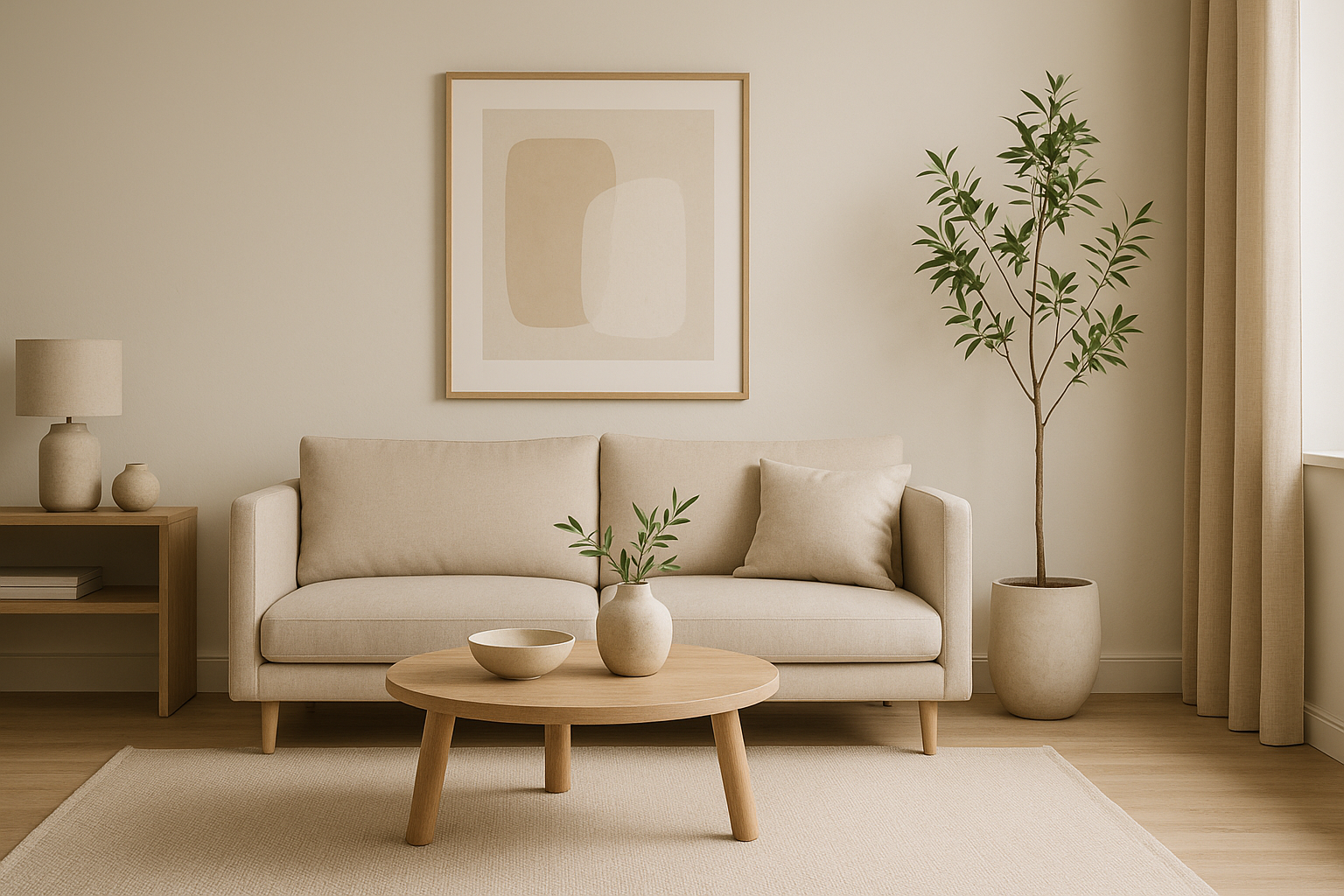Minimalism is more than a design style — it’s a lifestyle choice centered around simplicity, function, and intentional living. But while minimalist interiors are admired for their clean lines and uncluttered look, they can sometimes feel stark or uninviting if not balanced correctly. The goal is to achieve calm, clarity, and elegance without sacrificing warmth and comfort.
In this article, we’ll explore how to decorate a minimalist home that feels both stylish and welcoming.
Understand the Essence of Minimalism
Minimalism doesn’t mean empty rooms or plain white walls. It’s about choosing carefully, owning fewer but better-quality items, and focusing on what truly matters. The philosophy is: less clutter, more purpose.
Ask yourself:
- Does this item serve a function?
- Does it bring me joy or comfort?
- Does it fit the overall design vision?
If the answer is no, it might not belong in your space.
Choose a Neutral but Warm Color Palette
Minimalist interiors often start with a neutral foundation — think white, beige, gray, or soft earth tones. But the trick to avoiding coldness is adding warmth through undertones and accents.
- Use warm neutrals like taupe, sand, or cream instead of pure white.
- Introduce natural colors inspired by stone, clay, or wood.
- Add contrast with charcoal, black, or muted navy.
- Use one or two accent tones sparingly — soft green or terracotta work beautifully.
This creates depth while maintaining the calmness of minimalism.
Prioritize Quality Over Quantity
Minimalism thrives on fewer items — but they should be meaningful and well-chosen.
- Invest in solid wood furniture or timeless pieces with clean lines.
- Choose natural fabrics like linen, cotton, and wool.
- Select handmade ceramics, sculptures, or art over mass-produced decor.
- Stick to one or two statement pieces per room instead of filling every corner.
Every item should have intention — not just be filler.
Use Texture to Add Warmth
Without texture, minimalism can feel flat. Layering different tactile elements makes a room more inviting.
- Add a woven rug or knit throw blanket.
- Mix matte ceramics, smooth stone, and polished wood.
- Use linen curtains or sheer fabrics to soften light.
- Bring in textured wall finishes or natural fiber baskets.
Texture adds dimension without disrupting the clean aesthetic.
Keep Surfaces Clear and Functional
A hallmark of minimalism is uncluttered surfaces — but that doesn’t mean bare.
- Keep countertops and tables mostly clear, adding just one or two items (like a vase or candle).
- Store small objects in drawers, boxes, or cabinets.
- Choose multifunctional furniture with hidden storage to reduce clutter.
- Use trays to group items intentionally, like a reading corner with a candle and book.
Intentionality is key — every item should feel curated.
Incorporate Natural Elements
Nature balances the clean lines of minimalism with warmth and vitality.
- Add plants like snake plants, olive trees, or simple succulents.
- Use wood accents for tables, chairs, or shelving.
- Bring in stone or clay objects for organic texture.
- Use daylight as decor by keeping windows clear or with light curtains.
Even one or two natural elements can transform a stark space into a welcoming one.
Play with Light and Shadows
Lighting is essential in minimalist design — it defines mood and enhances simplicity.
- Choose slim, sculptural light fixtures.
- Use floor lamps and wall sconces instead of only overhead lights.
- Layer lighting with warm bulbs to soften the atmosphere.
- Let natural light flow by avoiding heavy drapes.
Shadows can also add depth and beauty in minimalist rooms.
Focus on Negative Space
Empty space is not wasted — it’s part of the design.
- Avoid filling every wall or shelf.
- Let blank walls act as a canvas to highlight furniture or art.
- Space between objects creates balance and calm.
- Resist the urge to over-decorate.
Negative space gives the eyes rest and enhances appreciation for what is present.
Use Art Sparingly But Impactfully
Minimalist homes benefit from art that makes a statement without overwhelming the space.
- Opt for large, simple artworks instead of multiple small ones.
- Black-and-white photography works beautifully.
- Abstract art with muted tones complements minimalist palettes.
- Sculptural or three-dimensional wall pieces can add interest without clutter.
One powerful piece can anchor a room.
Create Comfort Through Softness
Minimalism shouldn’t feel cold or unlivable. Comfort is essential.
- Add plush pillows and throws in natural fabrics.
- Use soft rugs underfoot in living and bedroom areas.
- Prioritize ergonomic furniture that supports relaxation.
- Mix straight lines with a few curved shapes, like a rounded chair or oval table.
This balance keeps the aesthetic clean while ensuring livability.
Final Thoughts: Minimalism with Soul
Minimalist design is not about living with less — it’s about living with intention. By choosing a warm color palette, layering textures, incorporating natural elements, and balancing empty space with meaningful pieces, you can create a minimalist home that feels serene, stylish, and deeply personal.
Your home should be a reflection of calmness and clarity, but also of comfort and warmth. When done thoughtfully, minimalism creates not just a beautiful space — but a lifestyle of simplicity and peace.
